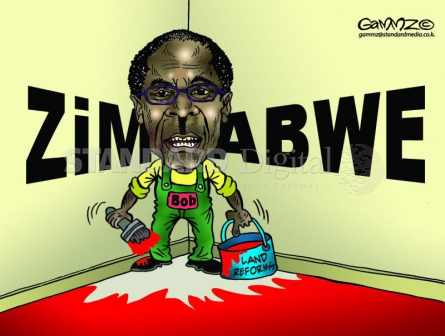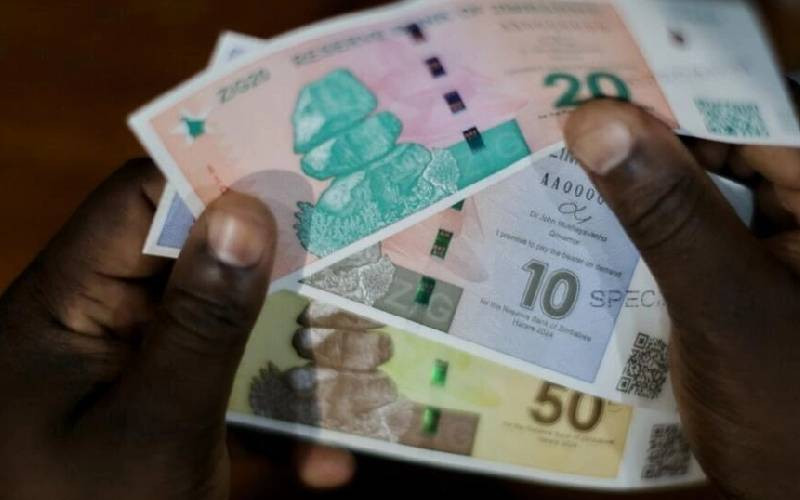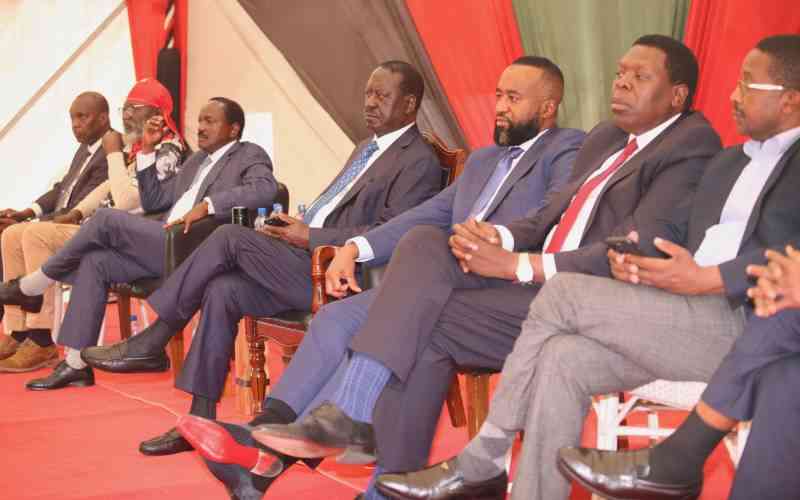
Shortly after Robert Mugabe rose to power in Zimbabwe in 1980, trade ties with Kenya hit a new high.
First, as Prime Minister, Kenya’s trade volume with Zimbabwe increased to over Sh15 million in 1981 and by the time he became President in 1987, Kenyan imports from Zimbabwe grew at a ‘spectacular’ rate of 85 per cent annually standing at Sh320 million in 1989 with exports standing at Sh180 million.
Although the trade gap was heavily imbalanced in favour of Zimbabwe, The East African Standard would later describe the partnership as “fruits of brotherly co-operation.”
But curiously, on one of his many official visits to Kenya, Mugabe, whose 37-year rule is nearing its end, confessed his fascination with only one thing – land distribution.
It is perhaps this besides his country’s unmatched hyperinflation that slashed the economy by more than a third between the years 2000-2008 that he will be best remembered for.
Peace talks
“Uncle Bob,” to use his moniker, had arrived in the country for peace talks with former President Daniel Arap Moi on resolving the then 13-year-old civil war in Mozambique.
At a luncheon hosted in his honour by former president Moi, Mugabe first hailed the relations between the two countries, speaking of a “common colonial past.”
He said the bonds of friendship could only grow stronger now that they were looking for a solution to the Mozambican turmoil.
He hailed Kenya’s social transformation, especially against a colonial background, adding that “his country had a lot to learn from it.”
Finally, he delivered the punchline: “Zimbabwe was closely studying Kenya’s successful land distribution process in a bid to follow the example.”
Whether Kenya’s land distribution can be termed a success is a story for another day as is Mugabe’s promise to use it as a blueprint in his country.
As is the case with most African countries during the colonial era, the best land in Zimbabwe was taken up by the whites.
Land was also the major driving force in the fight for Zimbabwe’s independence, where he took power in 1980 after a seven-year bush war against white minority rule in what was then the rebel British colony of Rhodesia.
Stay informed. Subscribe to our newsletter
In the year 2000, Mugabe orchestrated the seizure of land belonging to at least 4,000 white farmers.
The land then was responsible for producing some of the world’s best tobacco and one of Zimbabwe’s biggest export earner.
After the seizures, the tobacco industry collapsed. Years later, the 93-year-old admitted the failures of the land reform structure.
Scout for deals
He is quoted by the BBC saying that the farms were too large to be managed by the local people.
The 1980s were the best trade years between Kenya and Zimbabwe. Trade volume increased to over Sh15 million one year after the latter’s independence in 1980.
The imbalance of trade in favour of Zimbabwe, however, could be attributed to the raw steel that Kenya imported from Zimbabwe. Kenya used the steel to make steel billets from local industries.
In March 1988, Sh400 million orders from Kenya to Zimbabwe were made as a result of the then Preferential Trade Area agreement.
Kenya exported rosin chemicals, laminated sheets, textiles and leather to Zimbabwe.
In 1981, Zimbabwean journalists were also trained at the Kenya Institute of Mass Communication for production skills.
The country was then setting up a big radio and TV complex to cater for the rural people who were hitherto without any source of new. Agriculturalists also visited Kenya to study its zero grazing projects.
In 1981, Kenya mounted a “massive export drive” to Zimbabwe, sending about 40 Kenyan companies to the Zimbabwe International Trade Fair to scout for deals.
The then Kenya Association of Manufacturers Chairman Joe Wanjui urged manufacturers to emulate Zimbabwe, praising its private enterprise, especially for sustaining local industries which met most of the country’s needs.
By 1986, trade volume stood at Sh65 million.
Thirteen technicians from the Kenya Posts and Telecommunications Corporation were sent to Zimbabwe in 1983, then suffering from a dearth of trained technicians.
In 1988, the late George Saitoti, who was then vice-president and Finance Minister, opened a two-day Kenya Zimbabwe Joint Commission for Economic Scientific and Technical Co-operation.
Prof Saitoti said the co-operation between the two countries existed even before the colonial era when they exchanged information on research, particularly in agriculture.
Since then, Zimbabwe’s economy and currency have been on a free fall.
According to the South Africa 2017 Wealth Report by New World Wealth, a global market research group based in South Africa, at the turn of the millennium average wealth fell by over 400 per cent in Zimbabwe in the space of three months with property and businesses shedding value and by the end of 2001.
Slight imbalance
The average wealth in the country amounted to less than Sh30,000 (US$300) per person.
By then unemployment in the country skyrocketed to 80 per cent. “Average wealth in Zimbabwe reached its peak in 1990 at just over Sh160,000 ($1,600) per person,” says the report.
As of last year, the average wealth of a person in Zimbabwe was around Sh20,000 ($200), one of the lowest levels in the world, added the report.
As the world’s oldest president loses grip on power, official data shows that Kenya’s trade with Zimbabwe is growing, with total exports estimated at Sh914 million in 2016 and imports standing at Sh1.3 billion over the same period.
[email protected]
 The Standard Group Plc is a
multi-media organization with investments in media platforms spanning newspaper
print operations, television, radio broadcasting, digital and online services. The
Standard Group is recognized as a leading multi-media house in Kenya with a key
influence in matters of national and international interest.
The Standard Group Plc is a
multi-media organization with investments in media platforms spanning newspaper
print operations, television, radio broadcasting, digital and online services. The
Standard Group is recognized as a leading multi-media house in Kenya with a key
influence in matters of national and international interest.
 The Standard Group Plc is a
multi-media organization with investments in media platforms spanning newspaper
print operations, television, radio broadcasting, digital and online services. The
Standard Group is recognized as a leading multi-media house in Kenya with a key
influence in matters of national and international interest.
The Standard Group Plc is a
multi-media organization with investments in media platforms spanning newspaper
print operations, television, radio broadcasting, digital and online services. The
Standard Group is recognized as a leading multi-media house in Kenya with a key
influence in matters of national and international interest.









